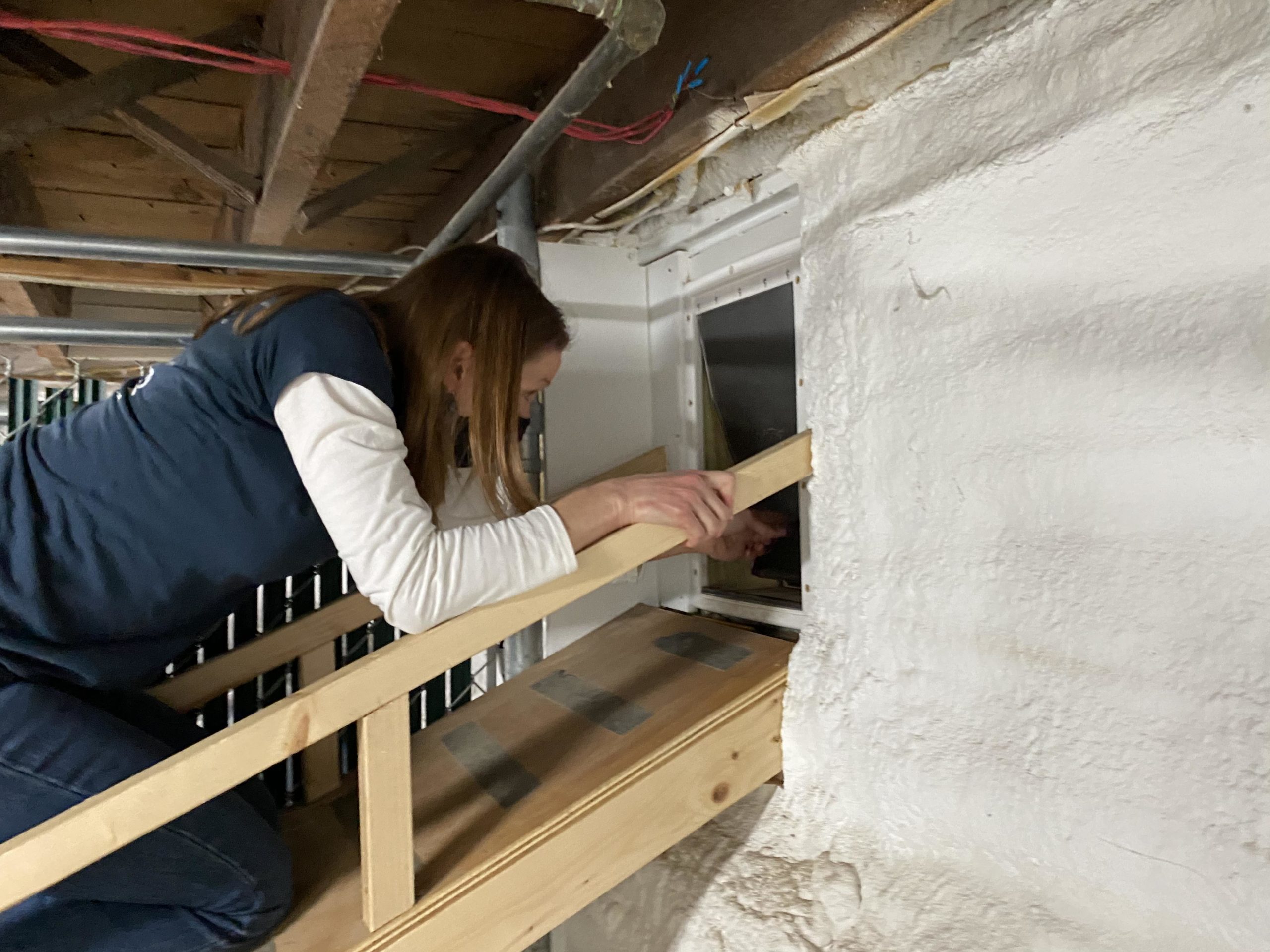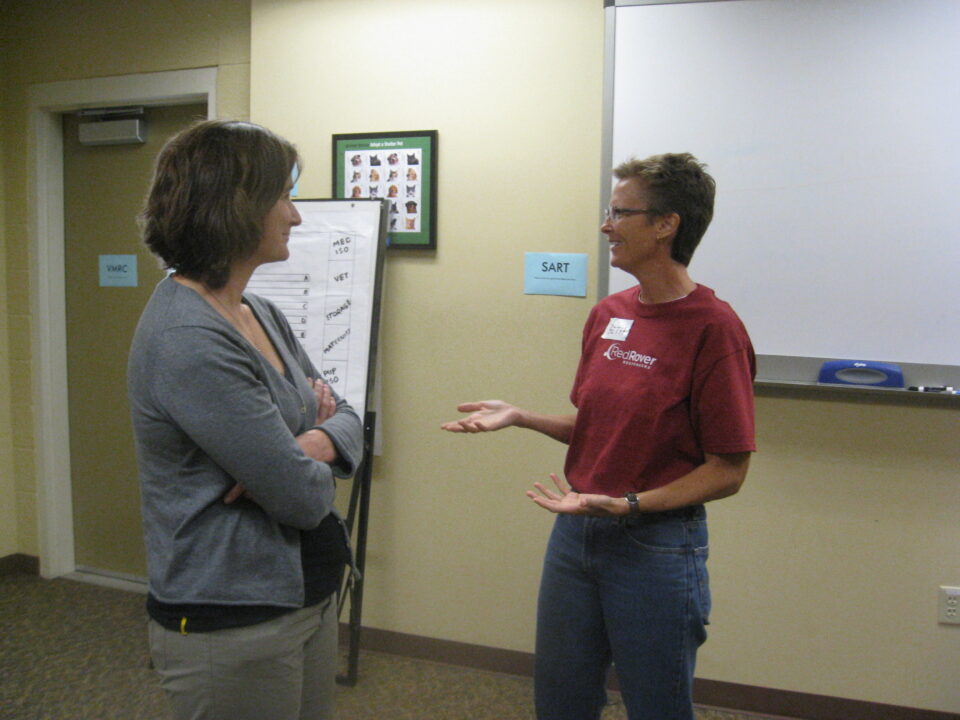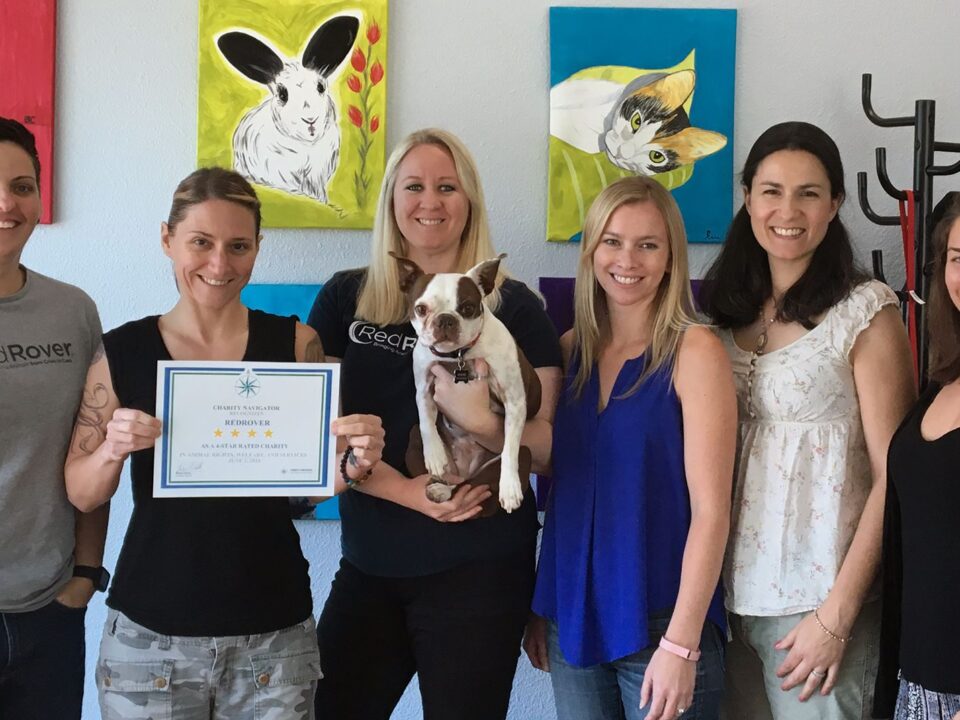Collaborating for Good
June 16th, 2021
By Nicole Forsyth, RedRover President and CEO
When I visited Safe Voices – the first pet-friendly domestic violence shelter in the state of Maine – it was the third shelter of its kind I had seen. These visits were similar in one important way: For all three shelters, becoming pet-friendly changed their shelter and client experience for the better, supporting the healing process and making the shelter feel more like home for everyone, including the pets!

Nicole exploring the pet-friendly spaces at Safe Voices Maine
The first time I saw a shelter’s pet-friendly bedroom, I imagined what it would feel like to be a survivor stepping into a room that felt so welcoming. Survivors often feel devalued, dismissed, and not believed, so feeling understood with the simple message that pets are important and welcomed by their side must feel profound. The idea brought tears to my eyes.
Over the years of listening to domestic violence (DV) shelter staff, we have learned about dozens of unique challenges and issues that shelters face, and we can almost always help design the best solutions for them. Most modifications are relatively simple, like converting a room to become pet-friendly. In touring Safe Voices, I was able to see one of these pet-friendly rooms. The carpet had been replaced with durable, easy to clean, allergy-free flooring, which was holding up well since its installation, and there was a cat bridge along one wall near a window to keep cats entertained.
In our outreach work, we help a DV shelter think through what their program could look like, what policies and collaborative partnerships they will need for their unique shelter and community, and when they may need further funding or construction assistance. In the case of Safe Voices, after receiving a Purple Leash Project Safe Housing grant (funded by Purina) from us in 2019, they partnered with Greater Good Charities (GGC) and their Rescue Rebuild program to complete the required construction. In addition to the Purple Leash Project grants, RedRover and Purina also work collaboratively to build awareness around the lack of pet-friendly DV shelters through Purina’s well-known brands as well as retail and media connections.
Collaboration and the support of community partners are critical for the success of pet programs at DV shelters, and I am so impressed with how many issues Safe Voices had to think through and how well they plan for contingencies. Since the goal is to reduce barriers for survivors and their pets to help them leave their abuser, attend to their own recovery, and not return to their abuser, shelters need to consider a lot of factors:
- The types and number of pets
- Number and age of children
- Behavior of the pets and the children
- Various services that the family may require

RedRover’s Katie Campbell with Rescue Rebuild during a visit to Safe Voices Maine
If they can’t shelter an animal on-site, Safe Voices works with their local animal shelter and other partners to ensure both people and pets can safely escape their abuser. Safe Voices has seen such success with their program that they are sharing their positive experience throughout Maine and beyond to help more domestic violence shelters develop their pet programs!
RedRover has partnered with GGC to offer training workshops called Don’t Forget the Pets. These workshops help domestic violence shelters, animal shelters, and other community partners work together to create pet programs. GGC has the expertise in the design and building of pet spaces, and RedRover has the experience in helping 138 DV shelters to date create pet programs. RedRover and GGC recently launched a new website and forum which will make our joint Don’t Forget the Pets training and resources even more accessible to domestic violence shelters and their community partners.
Our staff and volunteers sometimes help renovate grantee’s shelter spaces, and in the case of Safe Voices, three RedRover staff donned hard hats and got to work. Hearing the gratitude from the DV shelter staff and clients felt very rewarding. I met one client and her dog, and after hearing her story and how much her dog meant to her and knowing that they were now both safe, it fueled me to work even harder to achieve our 2025 goal of making 25% of DV shelters pet-friendly.
You can help us achieve this goal by donating to the Purple Leash Project or signing up for email and sharing our work with friends and family. Learn about more ways to help at RedRover.org/dvhelp.



